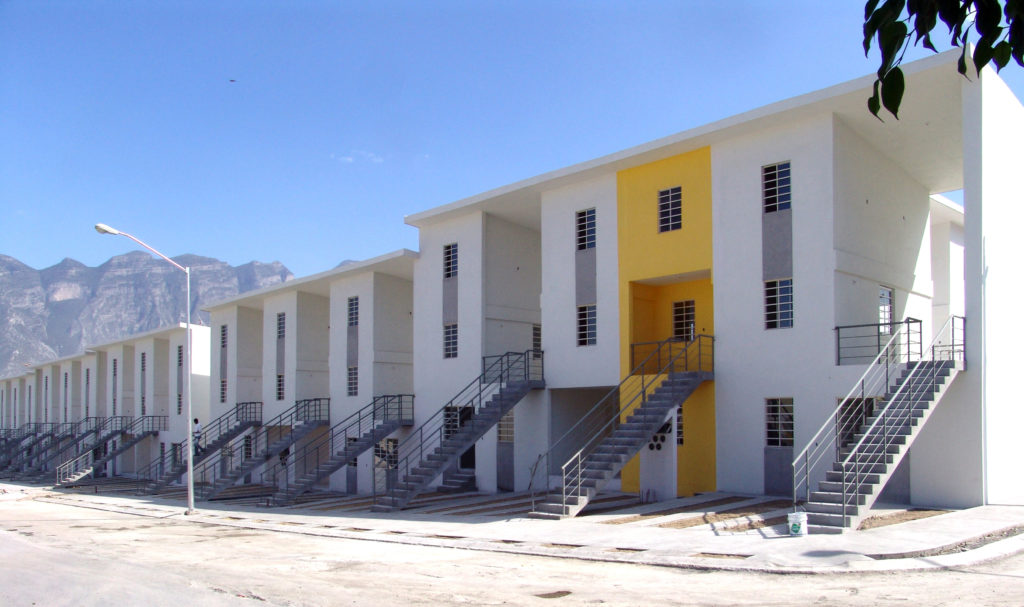Monterrey Housing, 2010, Monterrey, Mexico. (Ramiro Ramirez / ELEMENTAL)
Known for his work in disaster relief and low-income housing, Chilean architect Alejandro Aravena has taken his commitment to public architecture one step further. The 2016 Pritzker Prize winner and his "do tank" ELEMENTAL recently released open-source documentation for four variations on his "half of a good house" prototype. The designs adhere to an "incremental housing" approach, in which—rather than directing limited resources to a complete, but sub-par, housing unit—architects or builders construct the bare bones of a high-quality house for later expansion by the user.
Per ELEMENTAL, the incremental housing approach prioritizes the most technically tricky elements of housing design without losing sight of "what will guarantee the common good in the future." A successful "half of a good house" satisfies the following five conditions:
- Good location: dense enough projects able to pay for expensive well located sites.
- Harmonious growth in time: build strategically the first half (partition structural and firewalls, bathroom, kitchen, stairs, roof) so that expansion happens thanks to the design and not despite it. Frame individual performances and actions, so that we get a customization instead of deterioration of the neighborhood.
- Urban layout: introduce in between private space (lot) and public space (street), the collective space, not bigger than 25 families, so that social agreements can be maintained.
- Provide structure for the final scenario of growth (middle class) and not just for the initial one.
- Middle-class DNA: plan for a final scenario of at least 72m2 or 4 bedrooms (3x3m) with space for closet or double bed, bathrooms should not be at the front door (which is the typical case to save pipes) but where bedrooms are; they may include a bathtub and not just a shower receptacle and space for washing machine; there should be possibility of parking place for a car. None of this is even close to be the case in social housing nowadays.
Both the housing prototype itself and Aravena's decision to transfer his innovation to the public domain are responses to a worldwide crisis in affordable housing. "Given the magnitude of the housing shortage, we won't solve this problem unless we add people's own resources and building capacity to that of governments and market[s]," explains the manifesto accompanying the design documents. By making blueprints for the "half a good house" iterations publicly available, Aravena ensures that "people will be part of the solution and not part of the problem."
Read ELEMENTAL's "ABCs of Incremental Housing" and download drawings for all four houses here.









